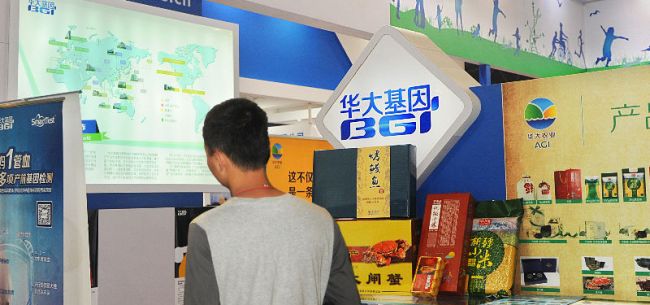At the end of 2015, Huada Gene Subsidiary Huada Medical was changed to a company limited by shares, and IPO documents were submitted at the end of the year to start queuing on the GEM.
This year has come a long way since the past years. The competition in various segments of its layout has become fierce. The company’s three main business segments, including reproductive health services, scientific research services and complex disease services, have been blocked by competitors. Clear date.
On November 5th, Huada Gene released a new gene sequencing platform, BGISEQ-50, which hides its determination to expand its grassroots market. At this time, the prospectus of the Huada shares was listed for 11 months.

Strategy behind the sequencer
When Huada Gene was first created, it was in the middle and lower reaches of the gene sequencing industry chain. The upstream market of the industry providing genetic sequencers and reagents was mostly occupied by the American illumina. In addition to supplying the sequencer, the tour operator must purchase the consumables and reagents required for the instrument to operate, and basically does not have bargaining power.
In 2010, the company purchased 128 Il-lumina sequencers, and Illumina immediately announced an increase in the price of its supporting reagents.
In 2013, Wang Jian, chairman of Huada Gene, successfully acquired the US listed company CompleteGenomic (hereinafter referred to as CG). Through CG, Huada Gene obtained the patented intellectual property rights of the sequencer. This is of great significance to the Huada Gene, and it has since started its own research and development.
"In 2012, suppliers have taken us as rivals. By 2013, we will not give us old machines, do not sell new machines, and raise the price of reagents. We are very uncomfortable." Wang Jian once told reporters.
The official website of Huada Gene shows that the current gene sequencing platform of Huada is still based on Illumina high-throughput sequencing platform. In addition, it has Roche 454 sequencing platform, Life's IonTor-rent sequencing platform and Applied Biosystems' ABI3730XL sequencing platform.
Huada stepped up the development of the sequencer, launched BGISEQ-500 in 2015, and launched the latest BGISEQ-50 this month. BGISEQ-50 is a small desktop gene sequencer. Jin Xin, deputy director of Huada's R&D Center, told reporters that the price of BGISEQ-500 is in the order of millions. The price of BGISEQ-50 has not been announced yet. Hundreds of thousands up and down. Liu Jian, one of the heads of the Huada Gene Sequencer project, said that BGISEQ-50 automates sample loading and sequencing in 10 hours, which means faster.
Zhu Yanmei, vice president of Huada Gene, reported to the Economic Observer that the device is more suitable for entry into the grassroots market, and its release will help Huada Gene achieve more regional coverage in non-invasive prenatal testing. At present, Huada Gene has achieved full coverage in the provinces and cities of southwestern Yunnan and northern Henan, and has large-scale markets in Wuhan, Tianjin and Shenzhen.
This fits the main business of Huada Gene. According to the IPO file submitted by Huada in 2015, the sales of reproductive health services in the first half of 2015 was 240 million yuan, accounting for 42.98% of the total revenue, and it has been increasing year by year since 2012. Correspondingly, the research services of Huada Gene are declining. Yin Wei, CEO of Huada Gene, explained to reporters that because the source of funding for scientific research services is state funding, the rising cost of sequencing flux is declining, and reproductive health services have a cognitive process, and the sample size is rising.
Traditional prenatal diagnostic techniques are most commonly used for amniocentesis and villus sampling. These invasive methods are associated with the risk of infection and miscarriage. In 1997, Professor Lu Yuming from the Chinese University of Hong Kong found that during pregnancy, the fetus in the body exchanges free DNA and RNA into the mother's plasma through metabolic exchange with the mother. Since then, Huada Gene has launched a non-invasive prenatal genetic testing service that analyzes fetal chromosomal aneuploidy (including all chromosomes) by sequencing by simply collecting peripheral blood from pregnant women and extracting free DNA from plasma. The risk rate of an abnormal number of diseases). This technology is considered to be the most intuitive monetization channel in the gene sequencing industry. Compared to measuring the site on the DNA, the number of DNA samples is not technically demanding, and BGISEQ-50 can meet the demand.
Huada’s strategy is to face the city as well as rural and small towns. Zhu Yanmei said that in small cities and towns in the central and western regions, Huada Gene cooperated with the government to join the government's livelihood project, and promoted reproductive health services through government subsidies and people's self-paying combinations, such as non-invasive prenatal testing and neonatal deafness testing. Wait, the price is mostly below one thousand. For example, the price is 800 yuan, the government subsidizes 400 yuan, and the people promote it in the form of 400 yuan.
Pickled Beefsteak,Frozen Pickled Beefsteak,Seasoned Pickled Beef Cubes,Fillet Steak
ZHOUSHAN GENHO FOOD CO.,LTD , https://www.genho-food.com